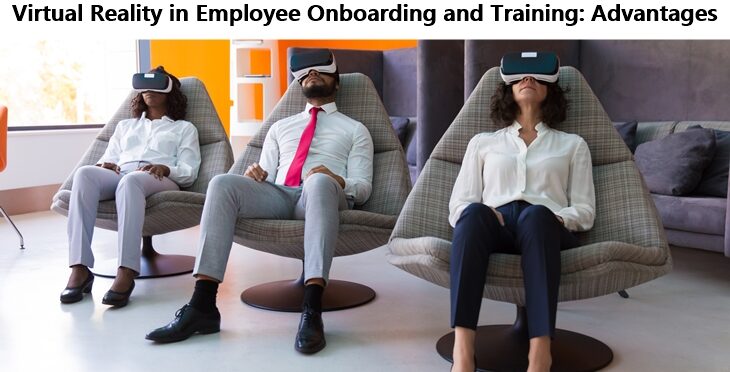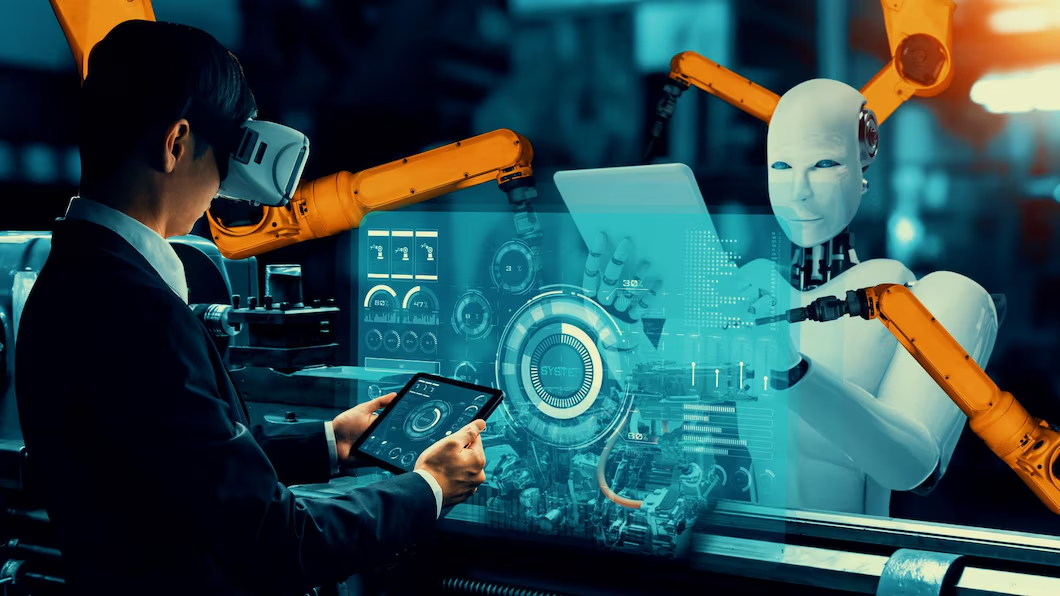Introduction
Virtual Reality in Employee Onboarding and Training is becoming increasingly crucial. It has altered the way people interact with each other. Virtual Reality is integrating itself into the business world. Virtual Reality in the workplace ensures that the learning process is enhanced. Employees are better able to express innovative ideas, and new personnel are seamlessly onboarded and trained.
Virtual Reality is simple and enjoyable not only to comprehend but also to memorize information. Theoretical knowledge lasts less time than practical knowledge. Virtual Reality has made the process of remembering things much more manageable. It is better than any audio/video teaching platform available today. In many areas, including healthcare and the military, doctors, surgeons, and officers have all been thoroughly briefed on the procedure.
Virtual Reality has also played an important role in the hiring process. Any job seeker would do their homework on the company they wish to work for. Pictures uploaded on the internet can be one of the ways to liven up the office, but what it really feels like to work there is the employee's curiosity. Virtual Reality allows a prospective employee to take a real-time walk-through the business.
The virtual tour of the workplace provides enormous delight to the prospective employee. It will also save the organization a significant amount of time. Companies that aren't familiar with virtual reality in employee onboarding and training, risk wasting a lot of time and money. This is the polar opposite of why they began their firm in the first place: to save time, produce more, and earn more.
Advantages of Virtual Reality in Onboarding
Virtual Reality in Employee Onboarding and Training has a substantial impact on travel and hotel costs. It also affects the additional downtime that must be accounted to employees traveling to attend their training. Reduced travel has a significant positive influence on a company's environmental footprint.
Understand the Company’s Culture
On their first day, new workers might use virtual Reality to obtain a sense of your company's culture. New employees can explore your firm's offices, access regions they might not otherwise see. They can experience moments that characterize the organization using virtual reality experiences.
The new employees can meet with the CEO or founders to learn about the company's mission and operations. Employees can attend meetings. See how others dress and act, and even sample a regular lunch with their prospective coworkers. The more information and understanding your new hires have about your organization, the more engaged they will feel. With Virtual Reality, you can cover a lot more land in a lot less time and with a lot less labor.
Effective Training
When it comes to virtual reality training, Walmart is the undisputed leader. Their virtual reality platform has been implemented in over 4,600 stores, assisting in the training of over 1 million employees. This has resulted in a lot of success and higher test scores. Because VR allows firms to simulate real-life settings with immersive video and audio, it is a highly effective training tool.
This allows new employees to become familiar and comfortable in the workplace before being thrown in. This is very important for prospective employees who will work in high-risk jobs. You may develop experiences that teach your new employees how to recognize potentially harmful circumstances by using 360° and VR content. You may securely and efficiently bring your new staff up to speed using this strategy.
Enhancing Retention
It's difficult to keep someone's undivided attention. All of the new things that someone sees on their first day can easily distract them. You have complete control over the material your employees see through their VR headsets. This way, you are much more likely to retain viewer engagement with VR. Furthermore, studies suggest that memory recall is 2x higher following a VR encounter. It is higher than after viewing a video or text-based learning materials.
Multi-sensory and emotional input anchors and strengthens human memory. People in virtual Reality are more "there" in the moment. This improves emotional response and, as a result, memory retention.
Creating Consistency
Humans are inconsistent. This can make creating a consistent image of your firm difficult. On a poor day, training your new hires can result in you not covering all of the points, rushing through it, and not conveying the correct tone or message. You can film the best version of the onboarding process. The recorded video can be used to provide a consistent message by converting it to VR.
Standing Out
You know how engaging well-made interactive VR material is if you've ever seen it. This type of involvement is a terrific approach to pique the interest of prospective employees. It sets you apart from the competition. According to a study, 49 percent of millennials want a better onboarding experience. 82 percent believe that high-tech offices will affect their perception of their new employment. Furthermore, 58 percent of worldwide millennial employees choose high-tech in-office amenities. Like Virtual Reality and Augmented Reality to free refreshments and ping pong tables.
Advantages of Virtual Reality in Training
Improved Learning and Performance
Experiential learning accounts for 70% of what people learn, compared to 20% from others and 10% through formal education.
Learning new abilities, retaining information, and altering behaviors are thus far more efficient when done practically. Virtual Reality's strength rests in its ability to provide a realistic environment. In this environment, students can gain hands-on experience with the required skills. It allows students to make mistakes, receive immediate feedback via performance-related metrics. They can repeat activities multiple times in order to improve their skills.
Because of advancements in VR platforms, super realistic settings and scenarios can now be created. Even the most complicated technical tasks may be recreated. It can be ensured that training exercises accurately mirror real-world working conditions. Learners can repeat these virtual tasks to develop muscle memory, which aids in learning retention and can later be applied in real life. Healthcare professionals can study and practice complicated surgical techniques in a risk-free setting. This can result in better patient care.
VR is also used by businesses to increase efficiencies by addressing process-driven skills. Employees may solve problems and work smarter by learning in a fun and results-driven environment. It enables companies to bring consistency to their working processes across multiple locations.
Making the Impossible Possible
In several industries, such as defense, oil and gas, aviation, manufacturing, and healthcare, on-the-job training is not an option. Practical training is far too high risk or unfeasible. But, being trained is job-critical, as failing could have disastrous effects.
In many cases, VR can be used to recreate dangerous events. These events can be created in a safe but realistic learning environment. In this way, risky jobs and skills can be practiced. By repeated learning from mistakes and repeating tasks, students can improve their skills.
Speeding Up the Learning Process
Time is money in business. Employees who are trained contribute to greater company productivity. Immersive training experiences enhance new skills more rapidly.
Virtual Reality also eliminates distractions, helping students to learn faster. In a study, Microsoft found that humans have a shorter attention span than goldfish. Humans lose concentration after eight seconds - which isn't helpful in learning. Real-world distractions can be blocked by wearing a VR headset. This can help to concentrate.
Cost Reduction
The long-term financial benefits of VR training are compelling. The direct and indirect savings compensate for the initial hardware expenditure. Once the course is designed, the costs of scaling it are cheap. VR training eliminates the need for repeat courses and high trainer fees.
Tangible indirect cost savings can be realized by reducing downtime and eliminating the need to stop production. This also enhances productivity by having better trained and proficient staff.
Remote Training and Accessibility
The best benefit of virtual training is that it can be accessed from almost anywhere in the real world. The necessity to get personnel together in the same physical area at the same time is meaningless with VR. This makes training more accessible to many employees.
Conclusion
Virtual Reality in Employee Onboarding and Training provides novel, interesting, and entertaining ways to train in secure settings. Individual learners benefit from it, as well as teams training together. Virtual Reality streamlines processes and contributes to a safer and more productive workplace.
You may like to read:
What Impact Will Augmented Reality and Virtual Reality Have on Our Lives?





